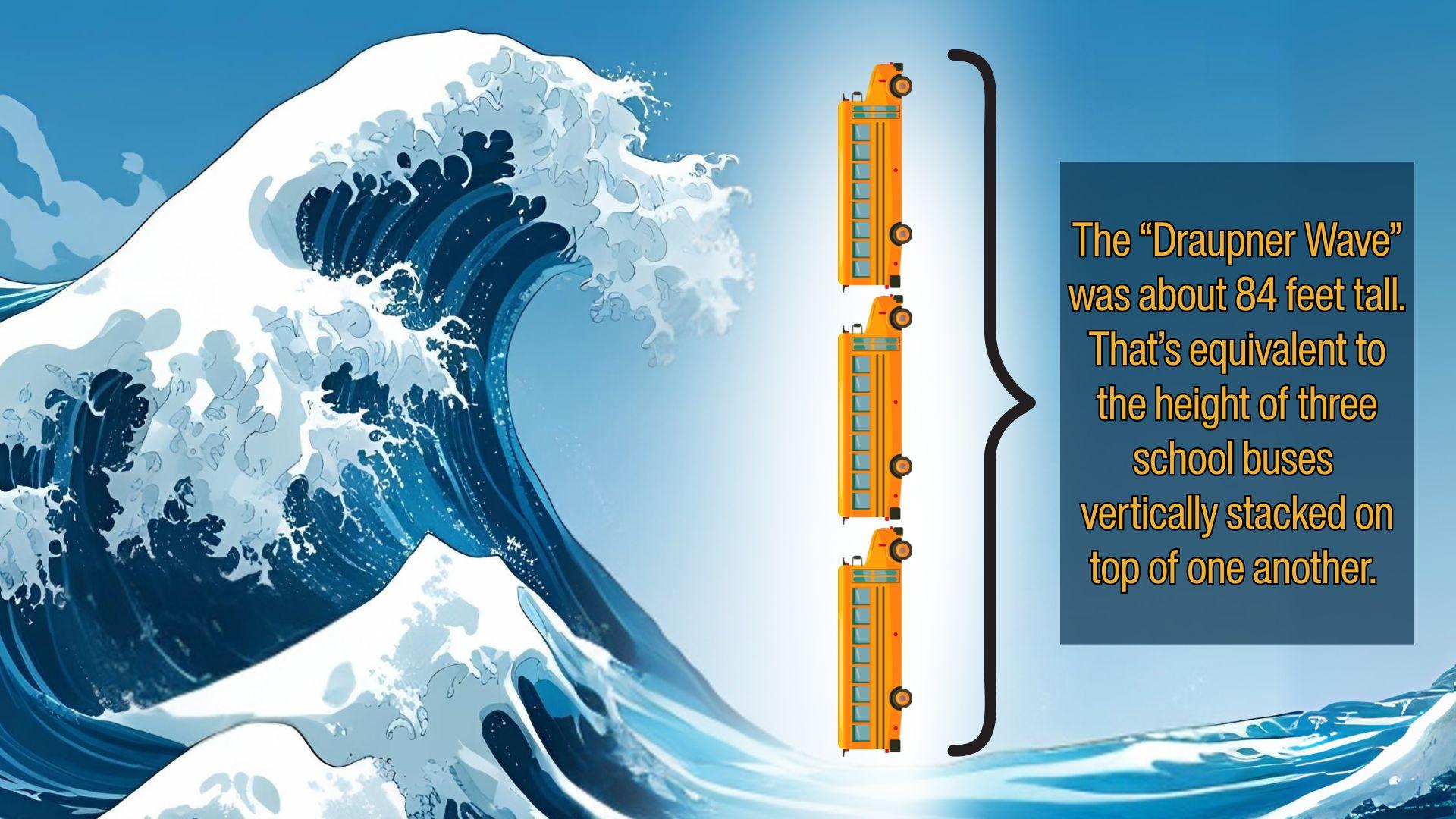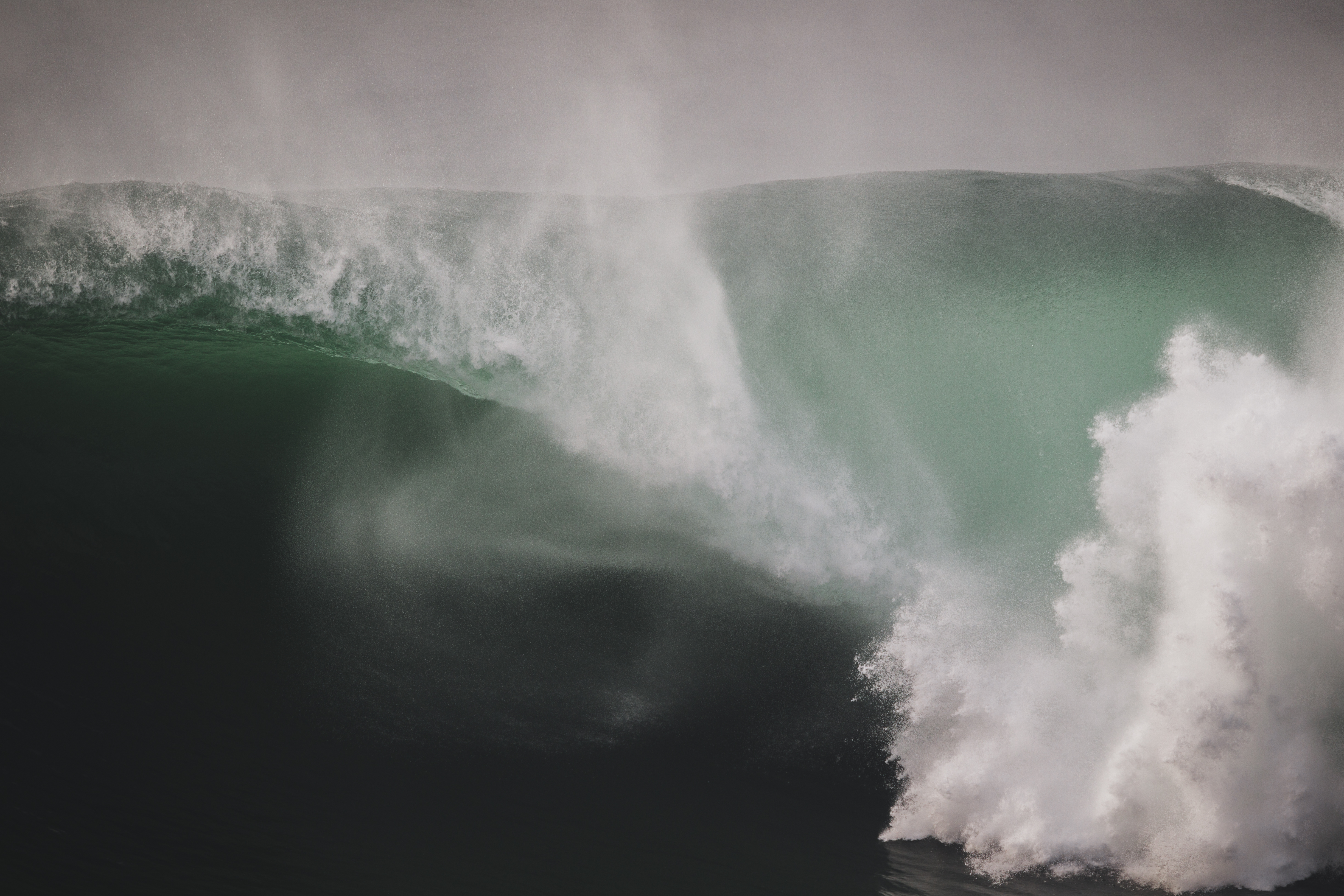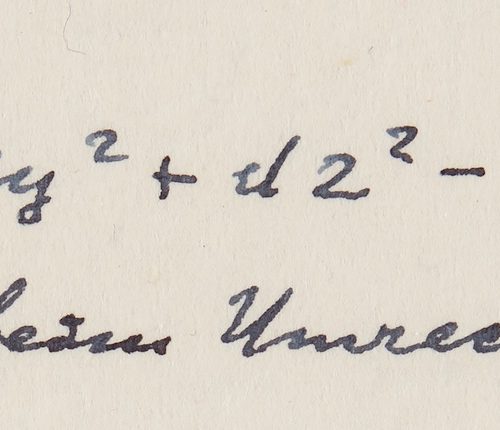Much like mermaids, the kraken, or the hafgufa, rogue waves have been regarded as a maritime myth. These waves do not always leave a lot of data behind, making it feel as if they spring up from the depths out of nowhere.
However, one monster wave did leave data behind for scientists. On January 1, 1995, a monstrous 80-foot wave slammed into the Draupner oil platform in the North Sea. This so-called Draupner Wave delivered a wall of freezing cold water onto the platform, sending heavy equipment flying across the deck and warping the structure’s steel railings.
“It confirmed what seafarers had described for centuries,” Francesco Fedele, an engineer specializing in wave mechanics at Georgia Tech, said in a statement. “They always talked about these waves that appear suddenly and are very large — but for a long time, we thought this was just a myth.”
Fedele is also the co-author of a study recently published in the journal Scientific Reports that finally pinpoints the origins of these legendary marine anomalies. Rogue waves are not a magical exception to the rules of physics. Instead, they are a result of these rules.

Diving into modulational instability
The dominant theory behind rogue wave formation has been a phenomenon called modulational instability. This is a process where small changes in the timing and spacing between waves makes energy concentrate into one wave. Instead of staying as evenly distributed waves, the pattern shifts and makes one wave grow significantly larger than the others.
According to Fedele, modulational instability “is mainly accurate when the waves are confined within channels, like in lab experiments, where energy can only flow in one direction. In the open ocean, though, energy can spread in multiple directions.”
The forces align
In this new study, Fedele and the team analyzed a comprehensive dataset of 27,500 wave records collected over 18 years in the North Sea. Each of these records captured 30 minutes of detailed wave activity that measured the wave’s height, frequency, and direction.
What the data revealed challenges some long-held assumptions about rogue waves. In order to occur, these enormous waves do not require an unusual force. All it takes is the right alignment of the familiar ones that create waves.
“Rogue waves follow the natural orders of the ocean — not exceptions to them,” said Fedele. “This is the most definitive, real-world evidence to date.”
The North Sea data had no evidence of modulational instability in rogue waves. Instead, the team found that the biggest waves are likely the products of two simpler effects.
The first effect is called linear focusing. This occurs when waves traveling at different speeds and directions happen to align at the same time and place. The waves then stack together to form a much taller crest (the top part of a wave) than usual.
Bound nonlinearities is the second effect the team saw. These occur when the natural effects of a wave stretch the shape of a wave. This makes the crest steeper and taller, while flattening the trough, or lowest point of the wave, at the same time. The distortion can make big waves even taller by about 15 to 20 percent.
When these two standard wave behaviors come together, a much larger wave is the result. The nonlinear nature of ocean waves gives it an extra boost, helping it expand further.

‘They’re part of the ocean’s language’
Since rogue waves are not mythological or theoretical, they pose real dangers to ships and offshore structures. Even so, many forecasting models still treat rogue waves as unpredictable flukes, according to Fedele. Updating these models is critical for better safety.
“They’re extreme, but they’re explainable.” he said. “It’s fundamental for the safety of ship navigation, coastal structures, and oil platforms. They have to be designed to endure these extreme events.”
[ Related: Extreme 3D ocean waves can reach heights 4x steeper than previously thought. ]
The team is also using AI to comb through decades worth of wave data, training algorithms to detect the subtle combinations of height, direction, and timing that precede extreme waves. Their goal is to give forecasters better and more accurate tools that can predict when a rogue wave could strike.
While the ocean’s rolling waves may appear random, extreme waves like rogues actually follow a natural recognizable pattern that could aid these forecasts. Each rogue wave has a kind of “fingerprint” in the form of a structured wave group before and after the peak that shows how it formed in the first place.
“Rogue waves are, simply, a bad day at sea,” Fedele said. “They are extreme events, but they’re part of the ocean’s language. We’re just finally learning how to listen.”






